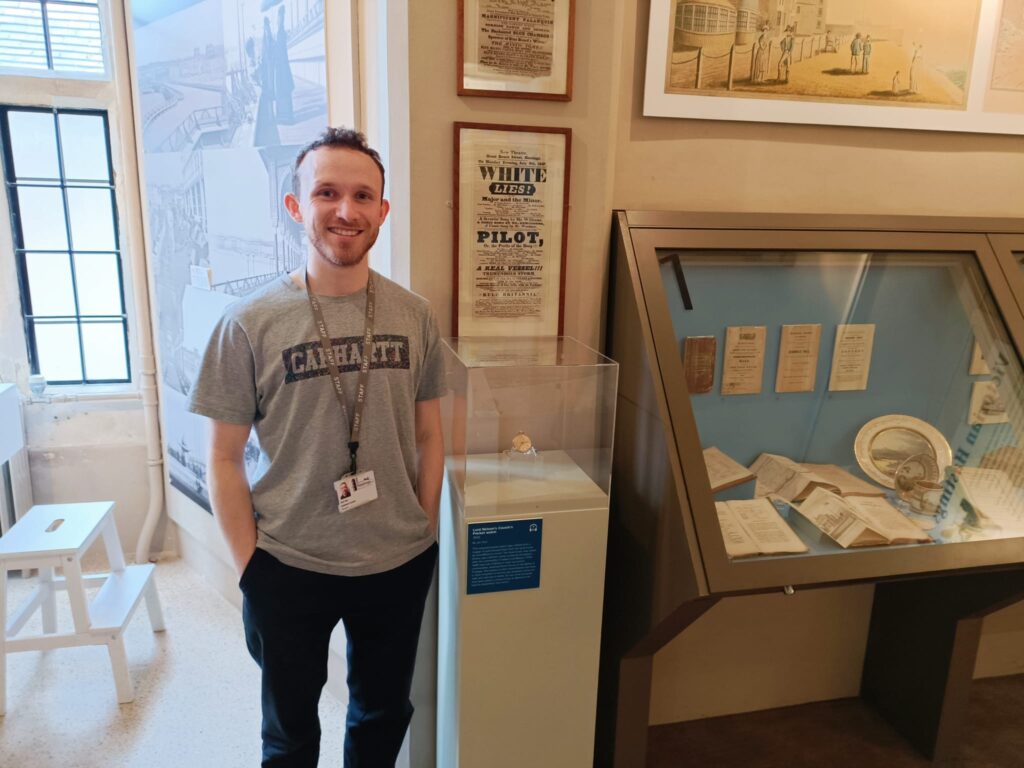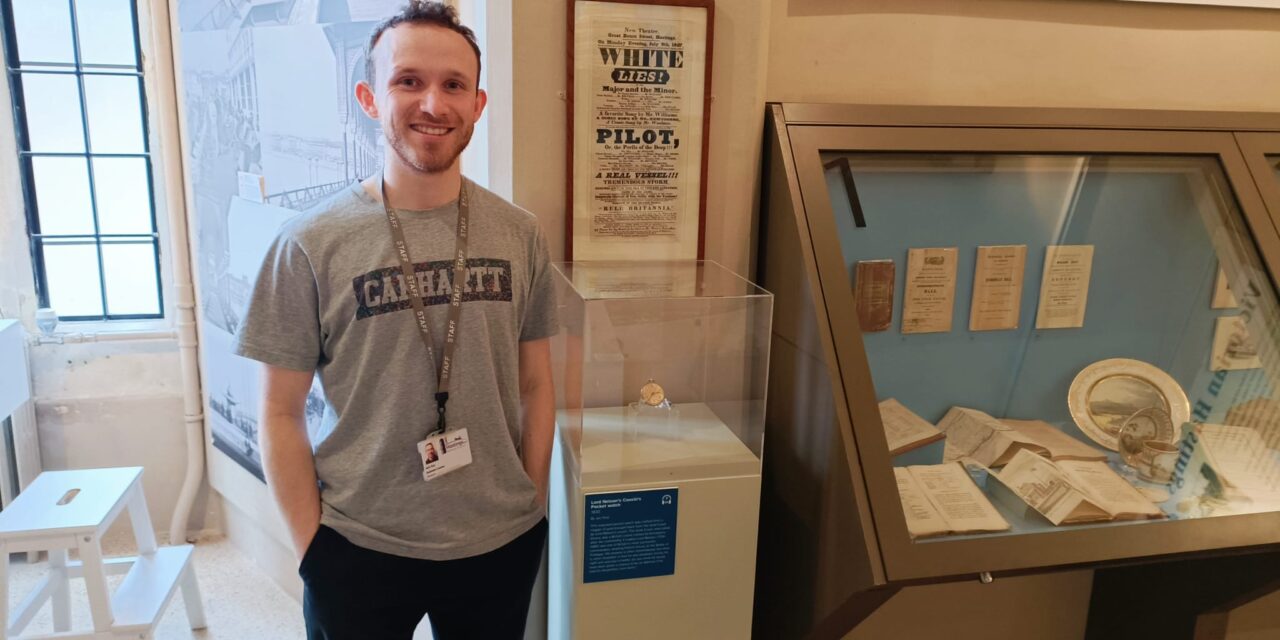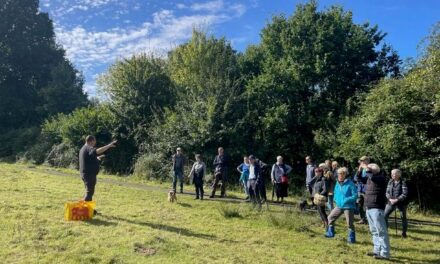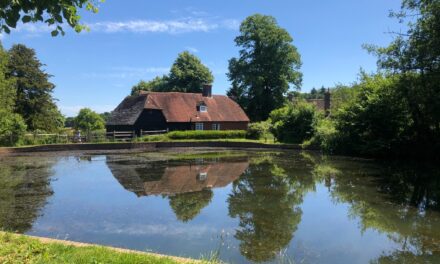Did you know that both dinosaurs and laudanum smell surprisingly good? I didn’t, and discovering so was just one of the highlights of the multi-sensory Disability History Audio Trail at Hastings Museum.
The trail presents 11 stories and reflections by experts with lived experience about items distributed around the museum’s existing exhibitions. The audio accompaniment reveals both how disability has been portrayed and how it has impacted society and culture over the centuries. The combination of stories and interactive sensory displays also reveal how other aspects of life intersect with disability, from wealth and power, to race and gender, creating a truly diverse range of experiences and history. Many with local connections to Hastings.
Prehistoric Accommodations
The first item we encounter on the tour is a prehistoric axe you can touch. The axe is at least 200,000 years old, and the tour takes us on a journey to describe the remarkable discovery of a Neanderthal skeleton, Nandy.
Nandy’s remarkable and severe disabilities reflect possible accommodations in pre-history. Even the most able-bodied individuals had a hard time surviving 50,000 years ago, but Nandy managed to live to around 30-45 years old. This suggests that with his severe impairments, he was cared for by his tribe or clan to live to a relatively old age for his species.
Thank Hastings for Television
Someone who I didn’t know had a connection with Hastings was John Logie Baird. While a chronic health condition set Baird back, his time in Hastings to recover reconnected him with his ideas for inventing the television.
The first ever motor to power this key modern invention was on display at the museum. Despite fluctuating health, John persisted in developing a working TV. The motor is usually kept in the back of the museum, and its display pays homage to how disability is also often hidden from sight, but plays such a key role in many things that today we take for granted.
The Tragedy of Elizabeth Siddal
Stop 4 on the Disability Audio Trail recounts the tale of Elizabeth Siddal through the display of a bottle of laudanum, a universal remedy used extensively in the 19th century. The herbs and spices that laudanum contain explain the pleasing odour that visitors can experience, and the ornate bottles were marketed to women. But behind the ornate bottles and pleasant aroma was an additional mix of opium and ethanol that users paid a heavy price for.
Elizabeth was an artist, poet and model for the Pre-Raphaelite Brotherhood, whose most recognised member was Dante Gabriel Rosetti. He used Elizabeth as a model exclusively and eventually married her. Their marriage, however, stifled Elizabth’s own ambitions. And the ill health resulting from these challenges resulted in a dependency to laudanum which cut her life short. She tragically died of a laudanum overdose in 1862.
Elizabeth’s story highlights the challenges women faced when trying to develop a career beyond teaching and nursing in the Victorian era, and the devastating health impacts of living a life of restricted ambition.
Posset is not it
While laudanum’s dark side was masked by its scent, I can’t say the same for the posset pot. The scent on offer of posset, warm, sweetened milk curdled with wine or ale, is not something I’ll expose my nose to again by choice! Even if sometimes mixed with spices, the pungent aroma is maybe an acquired taste.
Posset has a long history in England, but during the industrial revolution, pots like the one on display became mass produced. The easy digestibility of posset meant it was often fed to people with long-term sickness or disability from the 15th to the 20th centuries.
The pot symbolises the relationship between illness and disability, and serves as a vital reminder that any of us can become disabled at any time of our lives, requiring adaptations to our lifestyles – including what we eat and drink.
A secret history of the world
From reflections on the possible links between ancient legends of Faery Children and neurodivergent people, to the torturous horrors of Lotus Shoes, the Disability Audio History Trail proves such a rollercoaster. The audio-described multi-sensory trail was curated and produced by In-Sight, a group of D/deaf, disabled, and neurodivergent individuals. So, while listening to the reflections of experts with lived experience on the hidden histories of disability, whether experienced from birth, through accident, ageing or illness, we can engage with a fascinating range of items to bring those histories to life. I discovered that the history of disability is a secret history of the world that deserves much wider exposure. And so can you now at the Hastings Museum through October 2027.

Jack Guy, Hastings Museum curator and member of In-sight, in Hastings Museum & Art Gallery.




